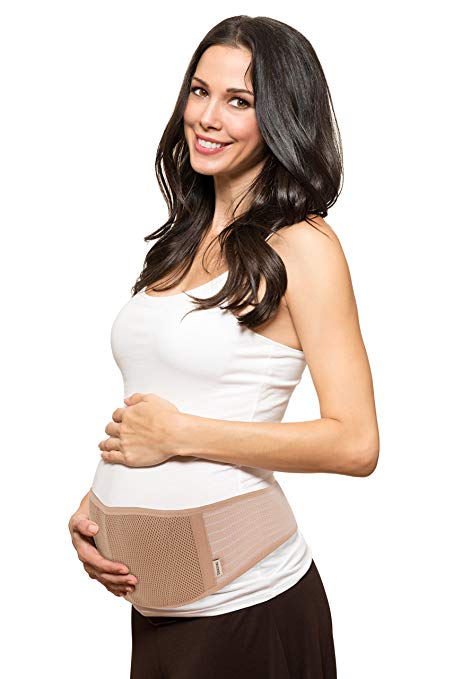

If you are in need of a baby crib, then a congratulations may be in order! You’ve come to the right place. Let’s get right to looking at the best baby cribs on the market. Shopping for a baby crib can be a daunting task. There are so many features to look for, and you may be wondering what’s really best for you and your little one.
Well, take a long deep breath and take it easy, because I’ve done all the hard work for you. I’ve ranked the top ten best baby cribs of 2018 below. You can click on each individual crib and see a product review below. So take a comfy seat and let’s get baby crib shopping.
Here Are The Best Baby Cribs !
Types of Baby Cribs:
Standard Baby Cribs

If you were born 30 years ago, chances are you had a standard baby crib. However, if you are younger, you might have noticed standard baby cribs on old TV shows and movies. Standard baby cribs come with four fixed sides and slats. It’s like a tiny and safe little baby jail. A place to put your little one while you take a nap or go to sleep at night. And, because of the bars, you won’t have to fear him or her falling out.
Pros and Cons
- Simple and sturdy construction
- Long lasting
- Lacks extra features
- Not easily moved
Convertible Cribs

Convertible cribs are also known as lifetime cribs. They are designed to grow with your baby. The basic feature of this type of crib is that it can convert into different types of furniture. Most convertible baby cribs can convert into a standard crib, day bed, toddler bed, single bed, or double bed. Sometimes a number system is given to the convertible cribs in order to show how many different ways the crib can convert. For example, a 3-in-1 crib can convert into three different types of furniture.
Pros and Cons
- Cost effective
- Grows with your child
- Long-term use
- Uses storage
Portable Cribs ( On Wheels/Casters

If you live in a small apartment or are short on space, a portable baby crib may be your answer. With a portable crib, as the name implies, you can move it from one room to another. Portable cribs are on wheels and can be easily moved by pushing.
Pros and Cons
- Easy to move
- Great if you have limited space
- Less design choices
Travel Cribs

A travel crib packs up and can be carried in one hand. So, if you are on the move and sleep in different places often, this may be the crib for you. This will also come in handy if you travel often or take business trips for work. Travel cribs are lightweight and mobile. For people that do travel, it’s nice that your baby will still get to sleep in the same bed each night.
Pros and Cons
- Lightweight
- Mobile
- Not as sturdy as regular cribs
- Prone to wear and tear
Multi-Purpose Crib

As the name suggests, a multipurpose baby crib will serve more purposes than just sleeping. This crib may be able to convert into a baby changer, dresser, or shelf-storage.
Pros and Cons
- Easy and quick set-up
- No need for extra furniture
- Less features
- Larger
Bassinet

A bassinet is a bed specifically made for babies from birth to about four months of age. They usually have fixed legs and casters for easy mobility from one room to another. After about four months, babies are usually transferred to a crib.
Pros and Cons
- Takes up little space
- Easy to move
- Cute photo opportunities
- Used for limited time
- Less sturdy than other cribs
Tips For Getting Your Child To Sleep In A Crib

Moving your baby to a crib can be a big transition for your child. A lot of children are not going to fall asleep at first. Fortunately, for both you and your child, there are some ways to get your child to sleep. I’ll go over a few tips on how to get your child to sleep in a crib.
Limit Distractions
Around 30 minutes before bed, you will want to start slowing things down. Give your child the time to wind down and get sleepy. Mild activities, such as reading a book or taking a bath, can be fun activities that don’t require much excitement.
Add White Noise
A silent room may make your child more upset and lonely. To make sleeping for your child easier, you may need to add white noise.
Start By Using The Crib Only For Naptime
Before your child sleeps in the crib for the whole night, you may want to allow your child to sleep in the crib only for naptime. That way, there is plenty of time for your child to get used to the crib without interfering with your sleep. This also allows you to watch your baby and make sure everything goes alright the first time he tries it.
Make It A Habit
Once you find a routine you like, you will want to make it a habit. For example, if you put your child in bed at 8 o’clock, then continue to follow that routine every night. If you make it a habit, your child should be tired by the time 8 o’clock strikes.
Choosing What’s Right For Your Family

Think about what is going to work for your family. With so many options to choose from, make sure to pick what is going to meet your individual family’s needs best. If you travel a lot, you may want a travel crib.
Or, if you like your baby near you at all times, a lightweight crib with wheels might work best. And, if you’re looking for a baby crib that will last you a long time, the convertible crib might be worth it despite having a higher price.
Pros and Cons Of Co-Sleeping With Your Child
- May get more sleep since your child will be content
- Breastfeeding will be more convenient.
- Great bonding time
- Can interfere with your romantic life
- Could be dangerous
- Less blankets because child could suffocate with too many at first
Safety Standards That Are Currently In Place For Cribs

Since your baby will be spending a lot of time sleeping in his crib, it is essential to get a safe one. Besides your own thinking about safety, there are some safety standards that are in place. Remember, however, that the safety standards are being updated all the time. You will want to make sure that the crib you are interested in meets the safety standards that are currently in place. To help you do this, I’ll go over some of the safety standards that are currently in place. For more information on the safety standards and recalls, you may want to check the CPSC, which will tell you about recent recalls on products.
The main safety standards that need to be met as of today are pretty simple. The mattress needs to have good support, and the slats and hardware need to be very durable. Make sure your crib hasn’t been recalled. If it has, you should get rid of it to prevent injuries from happening. The slates can be no more than 2 3/8 inches apart. This is because if they are too far apart, your child could get a limb stuck. This isn’t too big of a concern nowadays, since most modern cribs meet this safety standard. However, if you have an older crib, you will need to make sure the slats are close together.
Do not use a drop side crib
One crib that has been banned from the United States is the drop-side crib. The drop-side crib’s issues are that the plastic hardware can break, it can be installed upside-down which increases the chance of it breaking, and the drop side pieces can go missing over time. Although it is illegal to make, sell, or donate a drop-side crib, some people who have older cribs may still have it. Therefore, make sure to check if your crib is a drop-side crib. If it is, it is best to get rid of it.
Safety(What To Look Out For)
Of course you are going to want to make sure that your baby’s sleep space is as safe as it can be. Some features of the past, are no longer considered safe on baby cribs any longer.
Don’t:
- Crib Rails Should Be Fixed, Not Adjustable















1 Comment